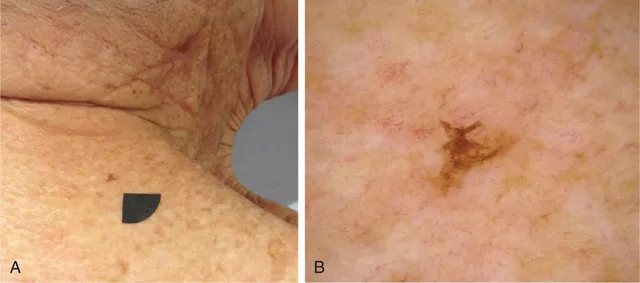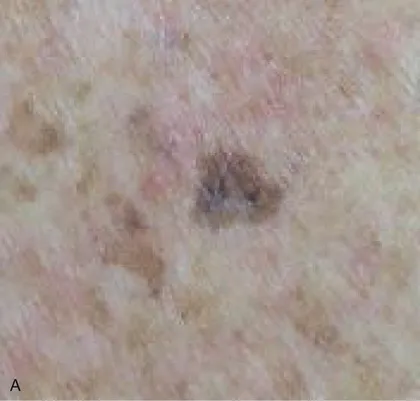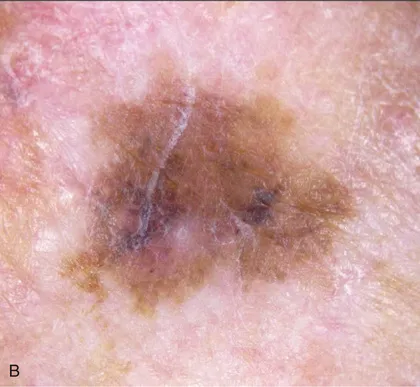
- 608 pages
- English
- ePUB (mobile friendly)
- Available on iOS & Android
Pathology of Melanocytic Tumors E-Book
About this book
Constituting a large percentage of everyday diagnostic practice, melanocytic pathology is a complex and challenging area with many difficult-to-diagnose lesions. This highly illustrated reference, written by three of the world's leading dermatopathologists, provides authoritative guidance in the accurate diagnosis of even the most challenging pigmented skin tumors, helping you avoid pitfalls and recognize mimics.- Covers nearly every variant of melanocytic tumors you're likely to see.- Emphasizes how to arrive at an efficient, accurate diagnosis, and includes dermoscopic findings for optimal diagnostic precision.- Discusses modern analytic techniques (cytogenetics, molecular studies) and how to use them for diagnosis.- Includes numerous case examples to illustrate the differential diagnoses and work-up; how to use ancillary techniques, along with their pros, cons, and limitations; and clinical follow-up.- Presents the knowledge and experience of Klaus Busam, Pedram Gerami, and Richard Scolyer, – three dermatopathologists who are globally renowned for their expertise in melanoma pathology and analysis of melanocytic tumors by modern ancillary diagnostic techniques.
Frequently asked questions
- Essential is ideal for learners and professionals who enjoy exploring a wide range of subjects. Access the Essential Library with 800,000+ trusted titles and best-sellers across business, personal growth, and the humanities. Includes unlimited reading time and Standard Read Aloud voice.
- Complete: Perfect for advanced learners and researchers needing full, unrestricted access. Unlock 1.4M+ books across hundreds of subjects, including academic and specialized titles. The Complete Plan also includes advanced features like Premium Read Aloud and Research Assistant.
Please note we cannot support devices running on iOS 13 and Android 7 or earlier. Learn more about using the app.
Information
Introduction
- 1. Melanotic Macules, 2
- Klaus J. Busam
- 2. Acquired Melanocytic Nevi, 8
- Pedram Gerami and Klaus J. Busam
- 3. Congenital Melanocytic Nevi, 26
- Pedram Gerami
- 4. Spitz Nevi, 37
- Pedram Gerami and Klaus J. Busam
- 5. Blue Nevi and Dermal Melanocytosis, 61
- Klaus J. Busam
- 6. Deep Penetrating Nevi, 80
- Klaus J. Busam, Iwei Yeh, and Richard A. Scolyer
- 7. Melanocytic Nevi of Special Sites, 90
- Timothy VandenBoom and Pedram Gerami
- 8. Persistant/Recurrent Melanocytic Nevi, Traumatized Nevi, and Nevi Changing Under Therapy, 101
- Maija Kiuru, Pedram Gerami, and Klaus J. Busam
- 9. Combined Melanocytic Nevi, 112
- Klaus J. Busam and Richard A. Scolyer
- 10. Pigmented Epithelioid Melanocytoma, 124
- Artur Zembowicz, Jarish N. Cohen, and Philip E. LeBoit
Melanotic Macules
Solar Lentigo
Clinical Features




Histopathologic Findings
Table of contents
- Cover image
- Title Page
- Table of Contents
- Copyright
- Dedication
- Contributors
- Preface
- Section I Benign Cutaneous Melanocytic Proliferations
- Section II Primary Cutaneous Melanoma
- Section III Primary Extracutaneous Melanocytic Proliferations
- Section IV Metastatic Melanoma
- Section V Ancillary Studies
- Section VI Prognosis, Staging, and Reporting of Melanoma
- Section VII Margin Assessment of Melanomas
- Index